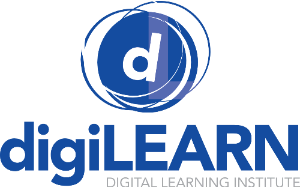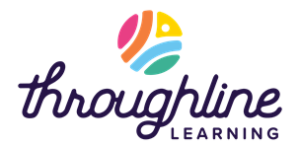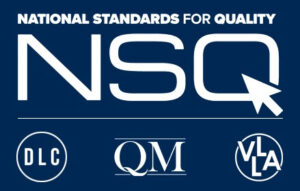
April 17, 2023
Journal of Online Learning Research – Volume 9, Number 1
Since I’m an Associate Editor for the journal now, I’m trying to do a better job of highlighting its articles. So below is the table of content and over the next few hours I’ll post individual entries for each article.
Remember that JOLR is an open access journal, so follow the links below to access these articles.
Journal of Online Learning Research
April 2023 Volume 9, Number 1
Editors
Mary Rice; Michael Barbour
Table of Contents
Number of articles: 7
Honoring Overlapping Agencies in Online Teaching and Learning
Mary Rice, University of New Mexico, United States; Michael Barbour, Touro University, United States
When it comes to technologies and learning, privilege and power reveal themselves in who gets to make choices and what choices can be made (Fawns, 2022). Children, their parents, and educators…
pp. 1-6
Socratic Seminars and Big World Topics: The Khan World School Model
Kelly Dalke & Emily Norton, Khan World School @ ASU Prep Digital, United States
Khan World School (KWS) @ ASU Prep Digital is a mastery-based, public, online honors school within the larger digital school at ASU Preparatory Academy. KWS began in the fall of 2022 with a 9th…
pp. 7-13
Examining the Remote Teaching Experiences of International Educators during the COVID-19 Pandemic
Lauren Woo & Leanna Archambault, Mary Lou Fulton Teachers College, Arizona State University, United States
The COVID-19 pandemic caused abrupt school closures and transitions to emergency remote teaching, which impacted millions of educators worldwide. Given an overall lack of international perspectives…
pp. 15-38
Evaluating Online Teaching Self-Efficacy and Effectiveness in Public PK12 Teachers
Virginia L. Byrne, Morgan State University, United States; Diane Jass Ketelhut, University of Maryland College Park, United States; Keyshawn Moncrieffe, Morgan State University, United States; Beatrix Randolph, University of Maryland College Park, United States
As the COVID-19 pandemic forced schools to close their buildings, public PK12 educators in the US had to pivot to something they had never done before or been trained to do: teach online. While…
pp. 39-56
Teaching Math Online: Evaluating Access and Rigor in an Asynchronous, Online Algebra 1 Course
Jennifer Darling-Aduana, Georgia State University, United States; Mason Shero, Vanderbilt University, United States
Algebra 1 is a gatekeeper course with profound implications for students’ academic and professional success. This study examines the implications of teaching Algebra 1 through a standardized, fully…
pp. 57-82
Assessing Access to Online Course Choice Among Brick-and-Mortar K-12 Students
Ian Kingsbury, Educational Freedom Institute, United States; David T. Marshall, Auburn University, United States
Many K-12 brick-and-mortar public schools now grant students the option of taking some of their courses online. Yet, a scant academic literature probes where online course choice exists and why it …
pp. 83-100
Parents with Disabilities’ Household Access to Educational Devices and Internet During the COVID-19 Pandemic
Aleksa Owen, University of Nevada, Reno, United States; Carli Friedman, The Council on Quality and Leadership, United States; Randall Owen, University of Nevada, Reno, United States
Because of COVID-19 school closures, household access to educational devices and Internet has been crucial to maintain educational milestones. While researchers have studied technology needs of…
pp. 101-126
No comments yet.
RSS feed for comments on this post. TrackBack URI
- SEO Powered Content & PR Distribution. Get Amplified Today.
- Platoblockchain. Web3 Metaverse Intelligence. Knowledge Amplified. Access Here.
- Minting the Future w Adryenn Ashley. Access Here.
- Source: https://virtualschooling.wordpress.com/2023/04/17/journal-of-online-learning-research-volume-9-number-1/
- :is
- 1
- 2022
- 9
- a
- academic
- Academy
- access
- advancement
- agencies
- among
- and
- arizona
- Arizona State University
- article
- articles
- Associate
- At
- authors
- BE
- before
- began
- begin
- below
- Better
- Big
- CAN
- Category
- caused
- Children
- choice
- choices
- clear
- Close
- College
- comment
- comments
- computing
- content
- Council
- course
- courses
- COVID-19
- COVID-19 pandemic
- crucial
- data
- Date
- David
- Devices
- Diane
- digital
- during
- each
- editor
- educational
- educators
- effectiveness
- emergency
- Ether (ETH)
- evaluating
- Examines
- exists
- Experiences
- Fall
- feedback
- few
- follow
- For
- Freedom
- Georgia
- given
- grant
- Have
- highlighting
- Honors
- HOURS
- household
- How
- HTTPS
- I’LL
- identifier
- impacted
- implications
- in
- individual
- information
- information technology
- Institute
- International
- Internet
- issue
- IT
- ITS
- Job
- journal
- Lack
- larger
- Leadership
- learning
- links
- literature
- made
- maintain
- make
- Maryland
- Mason
- math
- Meta
- Mexico
- Michael
- Milestones
- millions
- Morgan
- needs
- NEVADA
- New
- next
- number
- number 1
- of
- on
- online
- online course
- Online Learning
- open
- Option
- overall
- pandemic
- parents
- Park
- Pivot
- plato
- Plato Data Intelligence
- PlatoData
- Post
- power
- professional
- public
- quality
- reduce
- remote
- Reno
- research
- researchers
- resource
- reveal
- Rice
- School
- Schools
- Simple
- site
- So
- some
- something
- spam
- State
- States
- Students
- studied
- Study
- success
- syndication
- table
- TAG
- taking
- teacher
- teachers
- Teaching
- Technologies
- Technology
- that
- The
- their
- themselves
- These
- Through
- Title
- to
- Topics
- trained
- transitions
- under
- United
- United States
- university
- University of Maryland
- us
- volume
- What
- which
- while
- WHO
- with
- within
- Woo
- WordPress
- world
- worldwide
- Your
- zephyrnet











